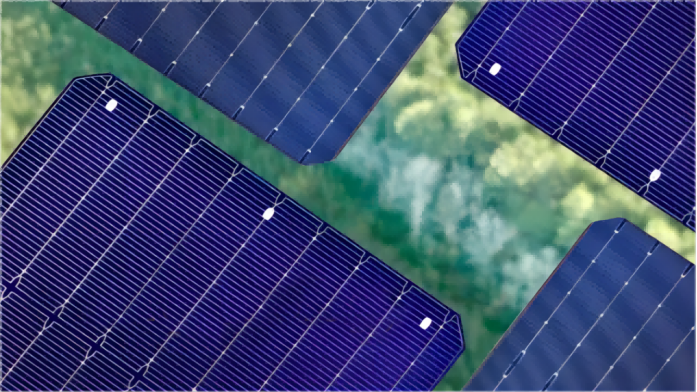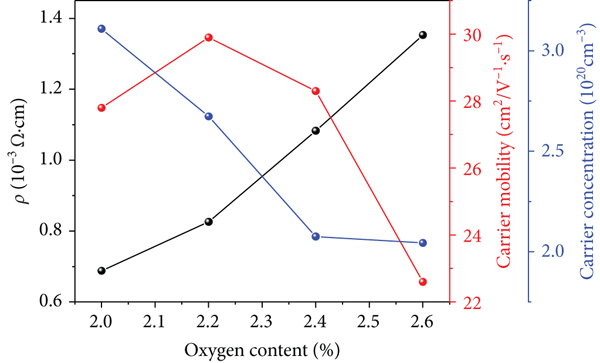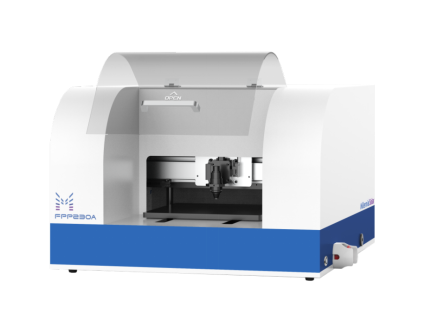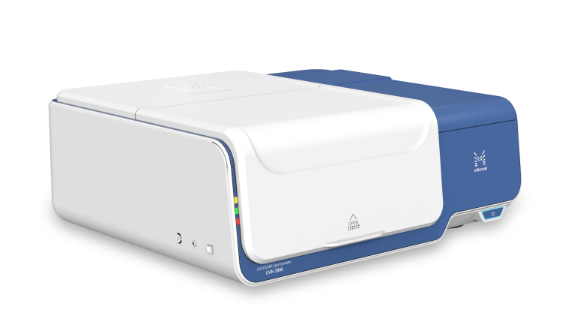
Quantum Efficiency Tester
PL/EL Integrated System
PV-Reflectumeter
3D Confocal Microscope
In-Line Four Point Probe Tester
Four Point Probe Tester
In-Line Thin Film Thickness Tester
Raman Spectrometer
FTIR Spectrometer
Spectrophotometer
Automatic Spectroscopic Ellipsometer
Contact Resistance Tester
Ultra depth of field 3D microscope
Auto Visual Tester
VMM PV Vision Measuring Machine
Solar Cell Horizontal Tensile Tester
Steady State Solar Simulator for Solar Cell
Solar Cell UV Aging Test Chamber
Solar Cell Comprehensive Tensile Tester
Visual Inspection Tester
Wet Leakage Current Tester
PV Module EL Tester
PV Module UV Preconditioning Chamber
Steady State Solar Simulator for PV Module
Current Continuous Monitor
Potential Induced Degradation Test
Bypass Diode Tester
LeTID Test System
Reverse Current Overload Tester
Impulse Voltage Tester
Hipot Insulation Tester
Ground Continuity Tester
Hipot Insulation Ground Tester
Damp Heat Test Chamber
Humidity Freeze Test
Thermal Cycle Test Chamber
Dynamic Mechanical Load Tester
Static Mechanical Load Tester
Hail Impact Tester
Robustness of Termination Tester
Module Breakage Tester
Cut Susceptibility Tester
Peel Shear Strength Tester
Universal Testing Machine (Single-arm)
Universal Testing Machine (Double-arm)
Glass Transmittance Tester
Acetic Acid Test Chamber
EVA Degree of Crosslinking Test System
Junction Box Comprehensive Tester
Drop ball tester
Semi-automatic scanning four-probe tester
Stylus Profilometer
Maximum Power Point Tracker
Perovskite Glass Transmittance Tester
Perovskite P1 Laser Scribing Multifunctional Testing Machine
Perovskite Online PL Tester
Perovskite Online Sheet Resistance Tester
Online Perovskite Film Thickness Tester
Perovskite Process Inspection Workstation
Portable IV Curve Tester
Portable EL Tester
Portable Thermal Imaging Tester
Solar Module Multi-Channel Testing System
PV Inverter Power Quality Tester
Drone EL Tester
IV Tester
IVEL Cell Sorting Machine
Factors Affecting the Performance of ITO Film During Its Preparation Process
Date : 2024-03-01Views : 125
With the rapid iteration of solar cell technology, HJT solar cells have attracted widespread attention due to their advantages such as high conversion efficiency, high open circuit voltage, low temperature coefficient, low process temperature, and bifacial power generation. Among them, ITO films play an important role in heterojunction solar cells. During its preparation process, oxygen content, deposition temperature and sputtering power will have a certain impact on its electrical and optical properties. Millennial Four Point Probe Tester and Spectrophotometer can respectively detect the thin film sheet resistance of solar cells and the reflectivity and transmittance of thin film materials, helping users choose the optimal preparation plan after preparing thin films under different conditions. This article will explain to you the impact of oxygen content on the electrical and optical properties of ITO films.

With the rapid iteration of solar cell technology, HJT solar cells have attracted widespread attention due to their advantages such as high conversion efficiency, high open circuit voltage, low temperature coefficient, low process temperature, and bifacial power generation. Among them, ITO films play an important role in heterojunction solar cells. During its preparation process, oxygen content, deposition temperature and sputtering power will have a certain impact on its electrical and optical properties. Millennial Four Point Probe Tester and Spectrophotometer can respectively detect the thin film sheet resistance of solar cells and the reflectivity and transmittance of thin film materials, helping users choose the optimal preparation plan after preparing thin films under different conditions. This article will explain to you the impact of oxygen content on the electrical and optical properties of ITO films.

Structure diagram of HJT solar cell
Among many TCO films, ITO film is an n-type semiconductor transparent conductive oxide film. It has unique optical properties, such as ultraviolet cutoff characteristics, high visible light transmittance, and high infrared light reflectivity. In the process of preparing ITO films, oxygen content, deposition temperature and sputtering power have a certain impact on the transmittance and conductivity of ITO films, and also have an impact on the performance of HJT solar cells.
Effect of oxygen content on electrical and optical properties of ITO films
1. Electrical properties
The oxygen content is sensitive to the transmittance and resistivity of the ITO film. ITO films prepared with different oxygen contents have different carrier mobility, carrier concentration, resistivity, and transmittance. The conductivity of ITO films mainly relies on oxygen vacancies and heteroatom doping to provide carriers. 1 Sn4+ instead of In3+ can provide 1 electron, and 1 oxygen vacancy can provide 2 electrons; however, the mobility is related to the scattering mechanism in the film.

Electrical properties of ITO films with different oxygen contents
As can be seen from the above figure, the carrier concentration decreases with the increase of oxygen content, which is caused by the decrease of oxygen vacancies. As the oxygen content increases, the mobility first increases and then decreases. When the oxygen content is 2.2%, the mobility reaches a maximum value of 29.9 cm-2/V-2·s-1; however, when the oxygen content exceeds 2.2%, the mobility decreases. The abundant oxygen content makes oxygen ions in the film become oxygen impurities. Therefore, the scattering of carriers increases with increasing oxygen content, resulting in a decrease in carrier mobility and an increase in resistivity with increasing oxygen content. According to ρ=Nμ, the resistivity of the ITO film is related to the carrier concentration and mobility, and is inversely proportional to the product of the carrier concentration and mobility. At the beginning, due to insufficient oxygen, there were many oxygen vacancies in the ITO film, resulting in higher carrier concentration and lower resistivity. Thereafter, as the oxygen content increases, the carrier concentration and mobility in the film decrease and the resistivity increases.
2. Optical properties
The transmittance of ITO films is mainly related to two wavelength regions, namely the medium and short wavelength regions and the long wavelength region. The transmittance in the medium and short wavelength region is mainly related to the bandgap width of the material, while the transmittance in the long wavelength region is mainly related to the carrier concentration. Excessively high carrier concentration will interact strongly with the incident light, thus affecting the transmittance of the film. As can be seen from the figure below, as the oxygen content increases, the transmission of the ITO film first increases and then decreases slightly. Due to the formation of high-valent compounds under high oxygen content conditions, the light transmittance of the film rises to more than 90%. When the oxygen content continues to be increased, the transmittance decreases again, which may be due to the absorption of excess oxygen ions by the grain boundaries and the enhanced scattering of the sample by defects in the sample.

Optical properties of ITO films with different oxygen contents
Four Point Probe Tester

E-mail: market@millennialsolar.com
Four Point Probe Tester can quickly and automatically scan samples up to 230×230mm to obtain sheet resistance/resistivity distribution information at different locations of the sample. It can be widely used in photovoltaics, semiconductors, alloys, ceramics and many other fields.
● Ultra-high measurement range, measuring 1mΩ~100MΩ
● High-precision measurement, dynamic repeatability can reach 0.2%
● Fully automatic multi-point scanning, multiple preset schemes can also be customized and adjusted
● Rapid material characterization and automatic correction factor calculation
Spectrophotometer

E-mail: market@millennialsolar.com
Millennial Spectrophotometer supports the measurement of solar transmittance in a wide range of wavelengths from the ultraviolet region to the near-infrared region, providing strong support for solar cell efficiency analysis. The equipment adopts a unique dual-beam optical design, which can perfectly correct the absorbance changes of different sample matrices, so that the sample can be measured stably. It has the advantages of wide testing range, high precision and good stability.
● Adopt dual light source and dual detector design, wavelength range 190-2800nm
●Double grating optical structure effectively reduces stray light
● The diameter of the integrating sphere can reach 100mm. It will not turn yellow after long-term use and has stable optical performance.
The low resistivity and high transmittance of TCO films can greatly improve the efficiency of solar cells. Millennial Four Point Probe Tester is specially designed for photovoltaic applications and has the advantages of ultra-large measurement range and fully automatic scanning. Spectrophotometer can fully meet the reflectivity and transmittance data testing needs of ITO films. Millennial is only here to help you open up a new future for optical testing!

































































